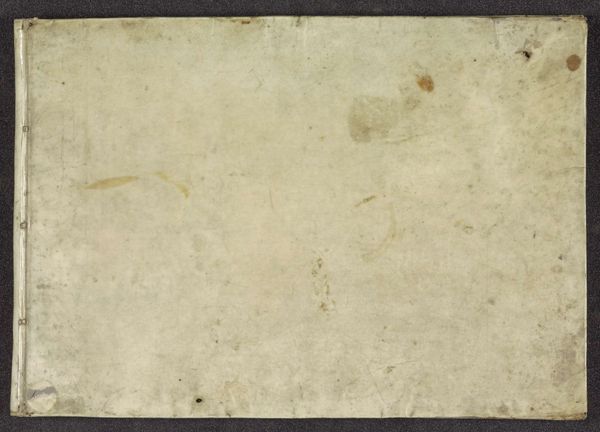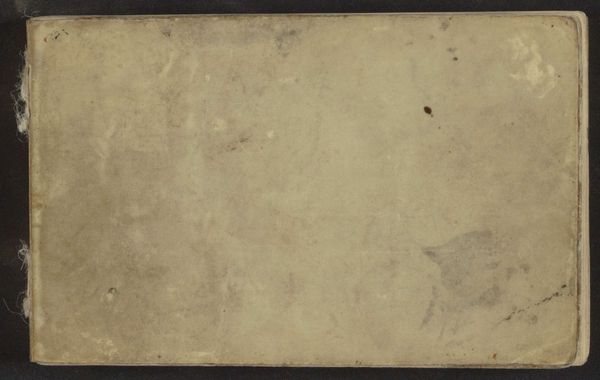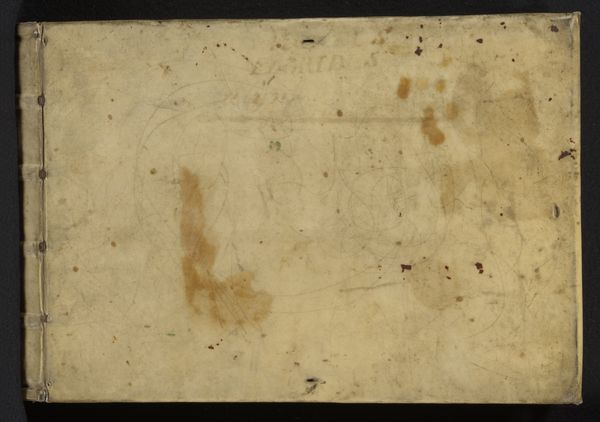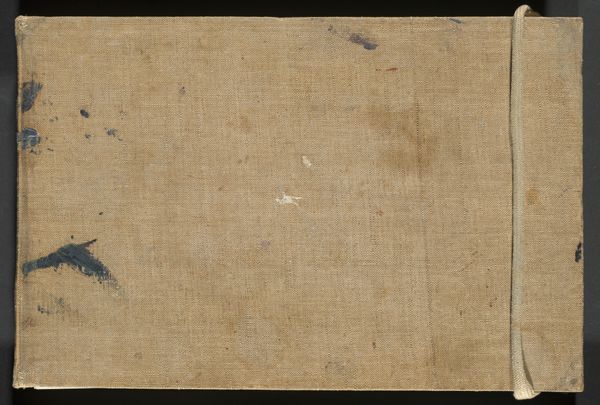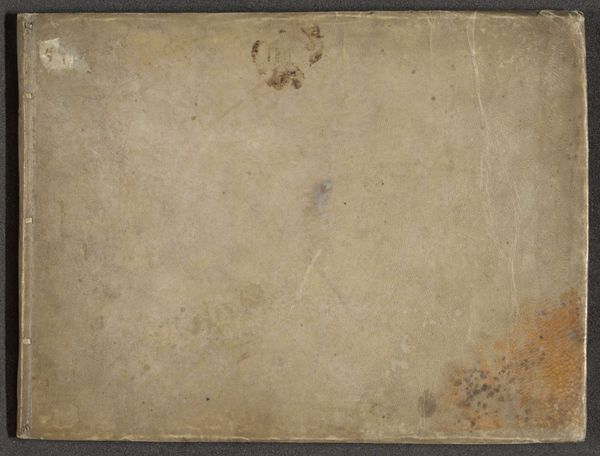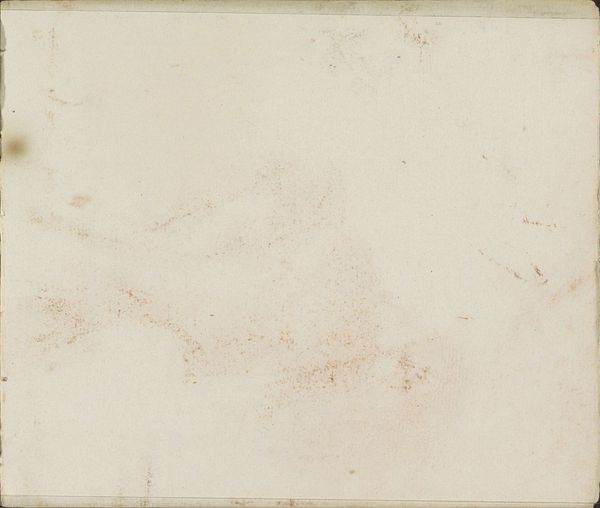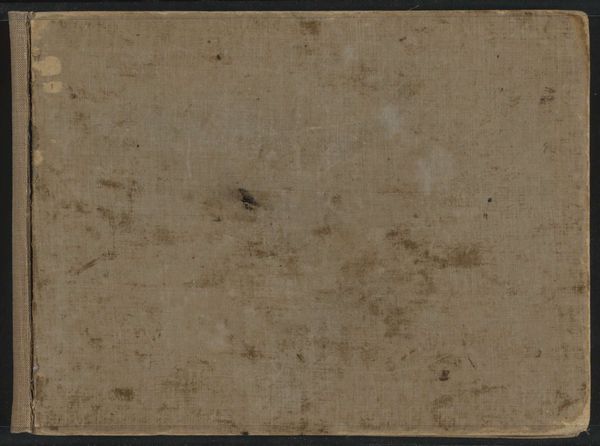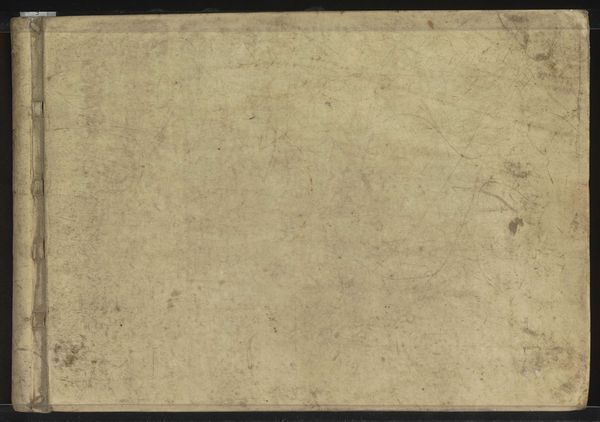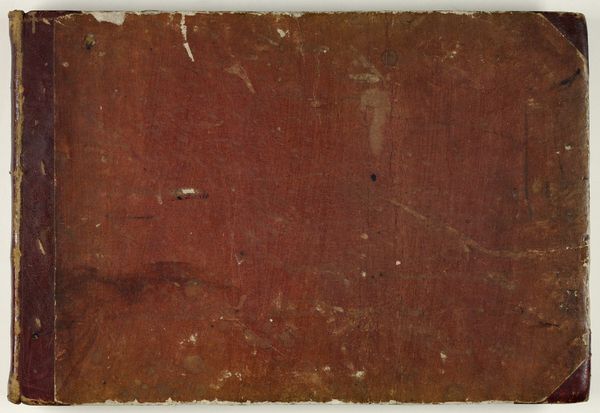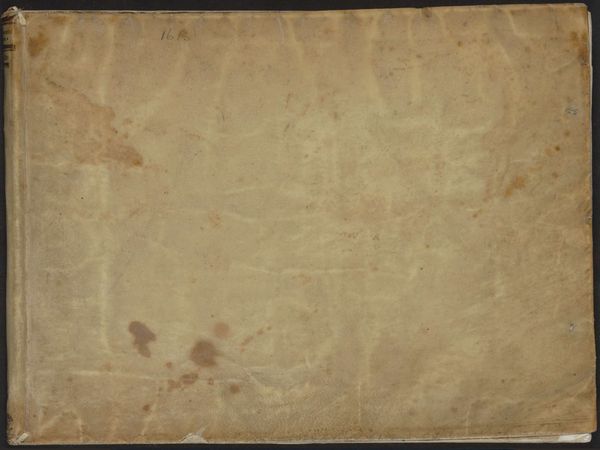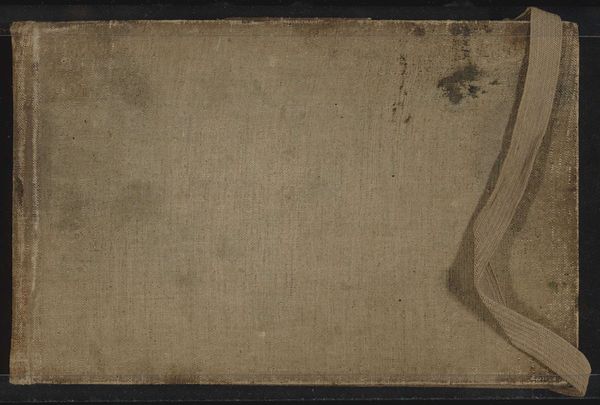
drawing, paper
#
drawing
#
landscape
#
paper
#
geometric
Dimensions: height 249 mm, width 367 mm, thickness 10 mm, width 740 mm
Copyright: Rijks Museum: Open Domain
Editor: This is a page from 'Schetsboek met 29 bladen', a sketchbook by Willem Witsen, dating from around 1884 to 1887. It’s a landscape drawing on paper, and the geometric shapes hinted at within the sketch give a somber and minimalist impression. How do you interpret this work, especially given its incomplete nature? Curator: That's a keen observation. I see it as a potential commentary on the rapid urbanization occurring at the time, particularly in Amsterdam where Witsen was working. Notice the barely-there outlines – they suggest the fragility of the natural landscape against the encroachment of geometric, human-made forms. Could the incompleteness be a visual metaphor for the constant state of change and loss experienced during industrialization? Editor: That makes me think about the political implications. Was Witsen perhaps critiquing the power structures driving this urbanization? Curator: Exactly. Witsen was part of a progressive circle. This sketchbook page could be interpreted as a subtle form of resistance against the forces reshaping not just the physical landscape, but also social structures and traditional ways of life. He presents an almost ghost-like presence of landscape. Editor: So, he's using the sketchbook not just to capture a scene, but to comment on the socio-political climate? Curator: Precisely. And the choice of such ephemeral materials – paper and quick strokes – reinforces this idea of transience and vulnerability. The unfinished quality also invites us, the viewers, to participate in completing the narrative, to consider our own roles within these systems of change. Editor: That’s fascinating. I initially saw it as just an incomplete sketch, but now I understand it holds a much deeper meaning, especially in its historical context. Curator: Indeed. Art often serves as a mirror reflecting the complexities of its time, inviting us to critically examine our own place within the ongoing narratives of power, identity, and change.
Comments
No comments
Be the first to comment and join the conversation on the ultimate creative platform.
